Over 20 years manufacturing experience of Road marking machine and road marking removal machine.
sales@lxdmarking.com+86 15805293662
What mistakes should be avoided during the construction of the hot melt ROAD marking machine
Abstract: However, the actual situation is that the construction of hot melt road marking machine is much more complex than that of normal temperature marking. 1. During the construction of the hot melt road marking machine, it is necessary to heat the powdery hot melt road marking machine coating to a high temperature of 180-200 ℃ and melt it into a liquid before use.
Many customers who have not been exposed to the construction of the overheated road marking machine have the misconception that the hot melt road marking machine, like cold spraying at room temperature, can only be used for construction with one hot melt road marking machine. But in reality, the construction of hot melt road marking machine is much more complex than that of normal temperature road marking.
1. During the construction of the hot melt road marking machine, the powdered hot melt road marking machine coating needs to be heated to a high temperature of 180-200 ℃ and melted into liquid before use. To ensure construction safety, when using a small hot melt road marking machine alone, the marking device should be used separately from the heating equipment for melting coating to avoid unnecessary burns and greatly improve melting efficiency.
2. In a batch of road marking construction teams, the hot melt road marking machines to be used include: hydraulic double tank thermoplastic preheater, LXD860 advanced hand push road marking machine, hand pushing pre marking machine, etc. Among them, the recommended hydraulic double cylinder hot melt preheater is the hydraulic double cylinder hot melt preheater. This utility model adopts a truck mounted hot melt preheater, which is convenient for transportation.
3. At the same time, it has the characteristics of high melt efficiency, good melt quality, less fuel use, energy conservation and environmental protection, simple operation, safety and reliability. In combination with manual marking machines, it is very efficient for the construction of yellow, white, and hot melt flat long solid marking lines and short dashed marking lines.
During the construction of the road marking machine, the road surface should be cleaned: special personnel should be arranged to clean the road surface to ensure that it is clean and free of obvious dust. (2) Measurement and setting out: When the road surface is clean, mark it according to the design drawing, then select white latex material to discharge the curb line, and mark the line after checking for accuracy. (3) road Marking machine marking:
a: Add the hot melt paint to the hot melt device and heat it evenly to the appropriate temperature
b: The placed waterline side is specially coated with a uniform undercoating agent to ensure better adhesion between the road surface and the markings, and to isolate underground moisture and prevent the markings from falling off after construction.
c: In a hand propelled construction vehicle, the hot melt coating that has melted to a usable state is loaded into the vehicle, and an appropriate amount of glass beads are placed in the body of the vehicle. Adjust the flow rate, and after the bottom oil dries to a suitable degree, proceed with formal construction. Using the waterline as the base to ensure construction quality.
d: The coating thickness of lane edges, lane boundaries, guide arrows, road centerline, warning signs, etc. is 1.5-2.0mm, and the thickness of deceleration signs is 5mm. The surface glass beads should be evenly distributed, and the marked lines should have good visibility, consistent width, consistent spacing, flush edges, good reflective effect, and firmly combined with the road surface. Cleaning: During construction, cleaning should be carried out during marking to ensure that there is no throwing, sprinkling, dripping, leakage, or pollution, and the equipment is free from oil or water leakage. The construction team shall carry out construction at a certain distance, promptly clean the road markings on site, maintain the cleanliness of the road surface, and avoid pollution.






